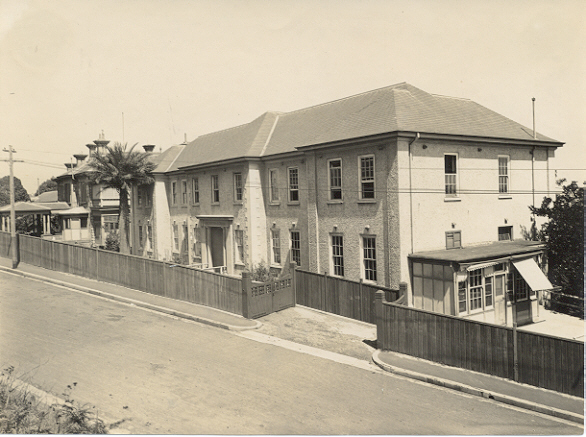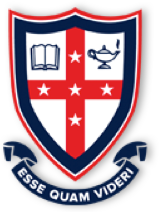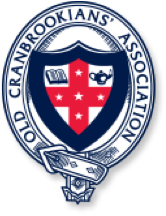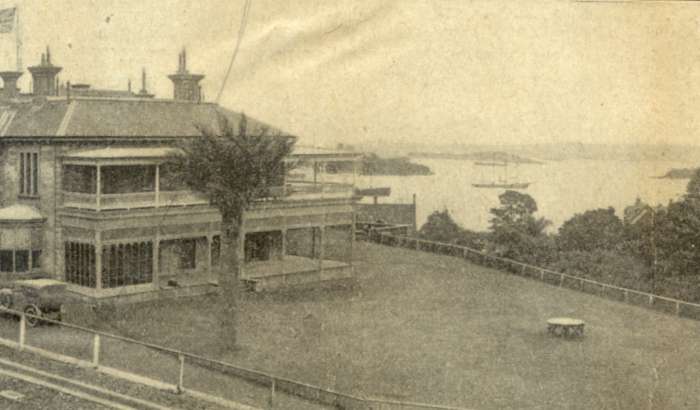Stories
Cranbrook's Origins
Cranbrook had an extended history prior to its commencement as a school on the afternoon of 22 July in 1918.
The name "Cranbrook" comes from Kent in the United Kingdom. Robert Tooth, the man who built the house that would later become part of the school, was born in Cranbrook, Kent. Tooth began construction in 1859 on what the Evening News later called “one of the most splendid private edifices of the Colony”.1 The Tooth family were brewers, establishing the highly successful Tooth & Co in Sydney some years later.2 Tooth’s home was in fact, by today’s standards, more like “a very plain, solid stone house”.3 It would later be added to extensively, particularly in its time as the official residence of three successive Governors of New South Wales.
When Australia created itself as a nation-state on 1 January 1901, Cranbrook became the residence of the Governor of New South Wales. For five years, the NSW Government leased Cranbrook from the then-owners for £400 per annum. At the time of Federation, Australia was still feeling the effects of “the bank collapses and the Depression of the early 1890s”, which was soon to be followed by a severe drought that ran from 1895 to 1903.4 The new federal government was “so determined to be frugal” that it “came close to postponing the creating of the federal High Court”.5 So when the newly appointed Governor-General needed Government House in the Botanical Gardens, Cranbrook was leased rather than purchased to give the NSW Governor a home. Eventually, in 1910, the Government would pay £22,500 for it.6
Between 1901 and 1917, three successive Governors lived at Cranbrook: Sir Harry Rawson, Viscount Chelmsford, and Sir Gerald Strickland. Cranbrook finally passed into the hands of the founders of the school when the property was sold, at auction on 1 December 1917. The first three school houses were named by the first Headmaster, the Reverend F. T. Perkins, after the previous resident Governors, beginning a naming tradition that has continued to this day.

- 1. Quoted in David Thomas and Mark McAndrew, Born in the Hour of Victory, Cranbrook School, 1918 – 1998, Sydney: Playright Publishing, 1998, p. 3.
- 2. Robert also served as a director of the Bank of NSW and the Colonial Sugar Refining Co. This and many other interesting facts about the Tooth family come from the archives of Berrima District Historical & Family History Society, Bowral Rd, Mittagong, because of a family connection to Bowral. Quoted in Philip Morton, “Sydney’s Tooth brewing family established local connections”, Berrima District Historical and Family History Society, Southern Highland News, 5 August 2013, extracted on 29 June 2017, from http://www.southernhighlandnews.com.au/story/1681820/sydneys-tooth-brewi....
- 3. A C Child, Cranbrook, The First Fifty Years, 1918 – 1968, Sydney: Stanely Owen & Sons, p. 14.
- 4. John Hirst, “Nation Building, 1901 – 14”, in The Cambridge History of Australia, Volume 2, the Commonwealth of Australia, Alison Bashford and Stuart Macintyre (eds), 2013, pp. 15 – 38 (p. 15).
- 5. The new federal parliament was kept small to reduce salaries, and it was housed in the Victorian Parliament House in Melbourne until the Commonwealth could build its own capital: ibid, p. 16.
- 6. A C Child, Cranbrook, The First Fifty Years, 1918 – 1968, Sydney: Stanely Owen & Sons, p. 18.


